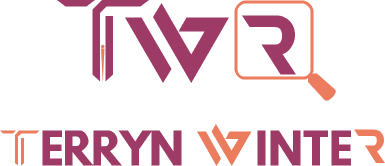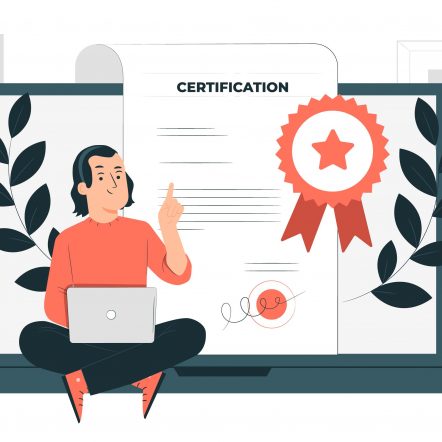I never thought I will write a blog sooner on Adobe Target since my core platform is Adobe Analytics. It was nearly 4 years since my first Adobe Target Implementation but I never shove myself until the date to get deeper into Adobe Target. Being Multi-Solution Architects, most of us do the same, gain experience on one technology / tool and get facile into the fundamentals of others. But my recent transaction proved it wrong, if you are a Multi-Solution Architect, you should be prowess in all related solutions.
Started working on Target more than Analytics, and within days was able to understand the gotchas. Attempted Business Practitioner Exam past week and able to clear it with par score. Since I am poised enough, sharing my experience here to support others who are trying to get hands on Adobe Target and Target Certification.
ACE: Adobe Target Business Practitioner Certification Exam Guide AD0-E401
Sources:
Source suggestions are different this time compared to Adobe Analytics.
1. Solution Partner Portal: I have to admit that the videos under the on-demand training of Target Business Practitioner Certification will not help. If you already knew Adobe Target fundamentals, then watching videos will not worth your time and help you clear Target Business Practitioner examination.
2. Experience League: Unfortunately, this time, I didn’t go through the prescribed courses in the Experience League and I’m going to tell you the explanation in a nutshell. It is not brainier for me to gather technical details, because I was in the implementation for some time now and thus looking for statistical fundamentals such as Statistical Significance, Minimum Reliably Detectable Lift, Estimating the Sample Size etc including Algorithms. It was quite challenging for me to understand the said fundamentals from an engineering perspective, but important because Adobe Target operates on it. Tried searching videos related to the same in Experience League Portal, no luck. Apart from this, from technical front, you can watch the videos in Experience League. It is exclusively free and anyone can enroll themselves to start their learning path. Login/Sign-up here (Free Sign-up).
3. Target Documentation: If you want to understand the gotchas irrespective of your intent, try scanning all the pages in the target documentation. You’ve heard me right, scan all the pages under target documentation. Should be 300+ pages and if you already have enough experience in Adobe Target, you can complete it within a week. When you can complete, there is a good probability of clearing the examination without a battle.
Topics:
Below are the constricted topics that must be covered in your learning path. Kindly don’t miss out the trivial details while learning / scanning.
- Types of activities and its Algorithms (Remember algorithm names). You should advice on the type of activity based on the business scenario given.
- 3 step guided workflow. Learn and practice the 3 step guided workflow across all the activities. List all the elements you see in the 3 step guided workflow and note down it’s function. Make sure that you are in a place to find and address the elements inside the 3 steps when asked for.
- Roles and permissions for Observer, Editor and Approver. It is trivial and thus don’t miss out any.
- Difference between Auto Target, Auto Allocate and Automated Personalization activities. Again, algorithm names are important.
- Analytics For Target (A4T) necessity, limitation and latency. A4T as reporting source across target activity types is more important. Go through troubleshoot A4T and FAQ once.
- Traffic Allocation methods and its importance.
- Activity Collisions and its control mechanisms. Understand granular and legacy priorities.
- Primary and Secondary Goals / Success Metrics with all available tabs for selection including the advanced settings. Understanding on activity measures Conversion, Revenue and Engagement is important.
- Activity Reporting interface, settings and download options across activity types and activity states (Active, Inactive, draft etc.).
- Adobe Target Sample Size Calculator and its statistical fundamentals. I can ensure you that at least 10 questions will be asked in this subject directly or indirectly on the examination. Go through all five user-defined parameters that define an A/B test (Link here).
- Statistical significance
- Statistical power
- Minimum reliably detectable lift
- Baseline conversion rate
- Number of visitors
As said, questions can be direct for indirect.
Direct Question: False Positive on a A/B Testing is controlled by which user-defined parameter? Answer is statistical significance.
Indirect Question: Increasing the Lift Percentage will results in increase the days to complete test or decrease the days to complete test? Answer is decrease the days to complete test.
- Ten common A/B testing pitfalls and how to avoid them (Link here).
- Audiences. There are few topics to cover under audiences.
- Default audiences list created under Target Library.
- Ways to create Audiences: From audiences tab, during 3 step guided workflow and audience reporting.
- List of categories available for creating audiences.
- Where do Custom Mbox Parameters and Profile Scripts are placed under the audience categories.
- Combine multiple audiences, create an activity-only audience and audience filters for reporting.
- Virtual Experience Composer and its gotchas.
- Need of Template Rule under Page Delivery section. Difference between multi page activity and same experiences on similar pages while creating experiences.
- Options available on VEC to edit the page elements including limitations.
- Use of compose and browse options in VEC.
- Modification Types especially CSS Selector under edition panel and custom code.
- Activity QA URLs across activity types to show default content and match audience rules to see experiences (Link here).
- Troubleshoot Target across activities and limits (Link here).
- Recommendations overview and fundamentals especially adding a recommendation as an offer in an A/B Test or XT activity. Fundamentals include entities, criteria, design and activities. Scanning is enough (Link here)!
- Setup tab to understand Preferences, Properties, Hosts and Response Tokens.
- From Based Composer and Offers, a scan.
I am not going to write a separate blog for Target Architect Exam. For Architect Exam preparation, replace the word ‘scan’ with ‘deep learning’ and include mobile implementation for both Android & iOS. Make sure that you also know Adobe Launch for Web Implementation and understand the roles of developer along with business understanding & activity creation.
Lastly, don’t try to work with dumps. Both Adobe Target Business Practitioner and Architect Exam are new, thus older dumps and practice tests do not help you clear the exams. Nevertheless, you can still practice to improve your logical understanding. All the best for your exams!
Bonus: Practice! Practice 3 step guided workflow, create activities, create audiences, QC the URLs, try to understand the response tokens directly using Console and also with Experience Cloud Debugger. i.e. Experience everything rather than learning. Download your exam guides here: Business Practitioner and Architect.








Nicee article 😍!! This is something I was looking for!!
Hello Gauresh, Enjoy reading and keep supporting! Thanks, Arun
Thanks Arun for sharing your thoughts and experience with us generously as always.
Your previous article really helped me pass the analytics exam, gonna plan my study following your advice again.
Dear Dina, Glad to hear that blogs are contributing. Kindly continue to support and all the very best for the Target Exam. Thanks, Arun.
Thank you for writing this blog, do you have any practice questions for this exam?
Dear Zoya,
Didn’t prepare one because most of the questions were scenario based so tougher to create a look alike.
Thanks You, Arun.